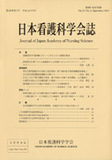Japanese
English
- 販売していません
- Abstract 文献概要
- 参考文献 Reference
- サイト内被引用 Cited by
要旨
薬剤漏出に対する処置として,罨法は日常的に用いられているがその効果を裏づける科学的な実証データが不足しているのが現状である.そこで本研究では,薬剤漏出に対する罨法の有効性を明らかにすることを目的に実験動物を用いた基礎的研究を実施した.起炎性薬剤として知られているジアゼパム注射液(セルシン(R))を使用し,ラットの背部皮膚に漏出後,罨法を30分間施行した.ラット皮膚の表面を,21±1℃に維持したものを冷罨法,41±1℃に維持したものを温罨法とした.罨法後4時間目と8時間目に,肉眼的観察と組織学的検索を行った.
その結果,肉眼的観察においては,罨法による作用は認められなかった.組織学的検索によって,冷罨法を行うことで皮下組織の浮腫や皮下組織内への炎症性細胞の浸潤が軽減することが明らかになった.また,温罨法を処置した部位では,皮筋内および皮下組織内への炎症性細胞の浸潤が広範囲に認められた.以上のことより,薬剤漏出時の処置として冷罨法は有効であり,温罨法は漏出病巣を悪化させることを裏づける実証データを得ることができた.
Abstract
Clinically, it is considered that application of a poultice, one of the major skills of nursing, is useful for reducing pain or edema of the skin. However, there is little scientific basis for the effects of a poultice on skin lesions. Therefore, this study focused on the effects of poultice application on lesions produced by extravasation of medical drugs. The lesions were produced on the backs of rats that had been administered a medical drug (Cercine®) subcutaneously. After extravasation of the drug, a hot or cold compress was applied to the affected part of the skin for 30 min. The hot poultice was hot, moist cotton maintained at a temperature of 41±1°Cfor 30 min. The cold poultice was cold, moist cotton maintained at a temperature of 21±1°Cfor 30 min. Both gross and microscopic examinations were performed. Biopsy samples were taken at 4 and 8 hrs after extravasation of the drug for microscopic examination.
The study showed that there were no macroscopic changes on the skin after application of either the hot or the cold poultice. However, microscopic examination indicated that cooling reduced the extent of subcutaneous edema and infiltration of inflammatory cells into the dermis, whereas with heating the inflammatory changes became progressively worse. These findings clearly demonstrate the effectiveness of cooling for lesions induced by extravasation of medical drugs.
Copyright © 2003, Japan Academy of Nursing Science. All rights reserved.


